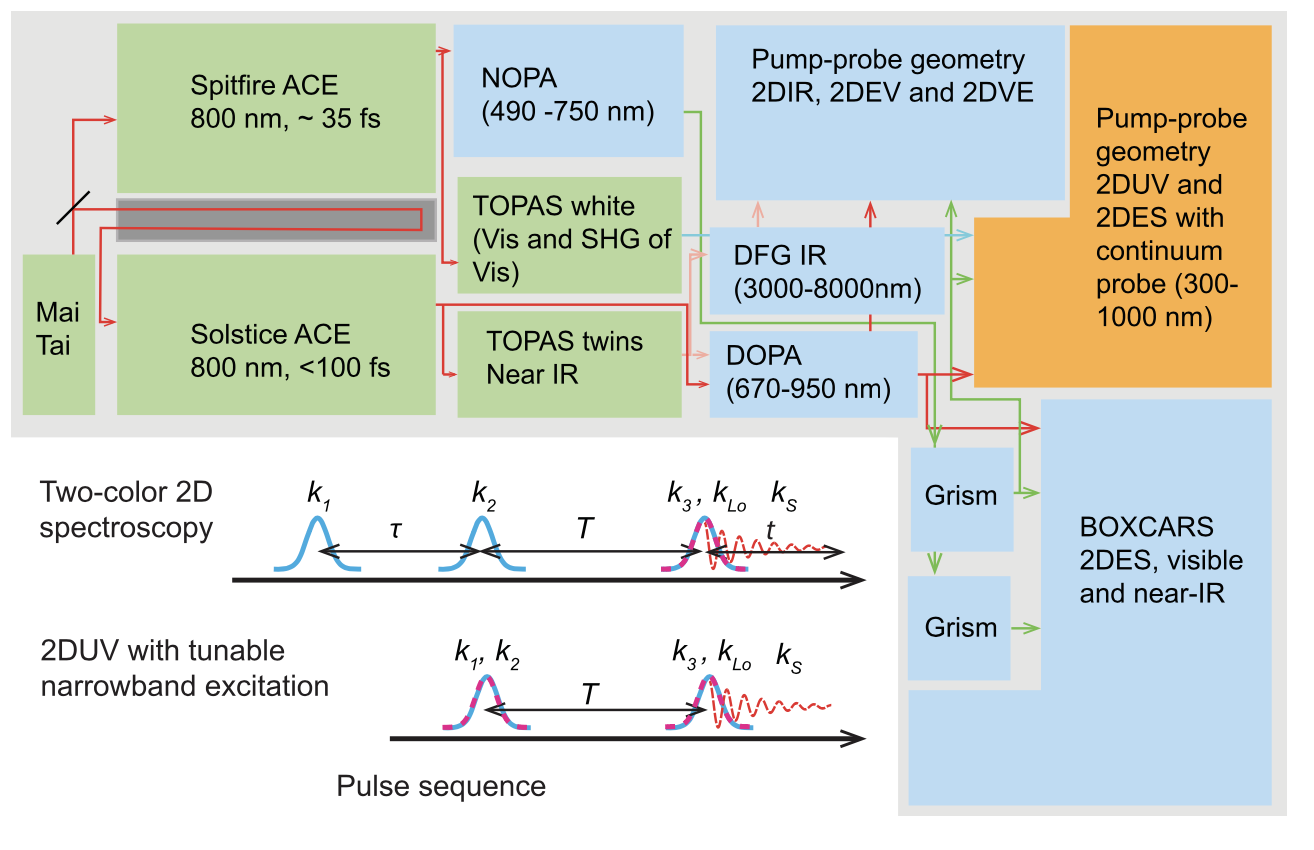Yin Song, Arkaprabha Konar, Riley Sechrist, Ved Prakash Roy, Rong Duan, Jared Dziurgot, Veronica Policht, Yassel Acosta Matutes, Kevin J. Kubarych, and Jennifer P. Ogilvie
Multidimensional spectroscopy is the optical analog to nuclear magnetic resonance, probing dynamical processes with ultrafast time resolution. At optical frequencies, the technical challenges of multidimensional spectroscopy have hindered its progress until recently, where advances in laser sources and pulse-shaping have removed many obstacles to its implementation. Multidi- mensional spectroscopy in the visible and infrared (IR) regimes has already enabled respective advances in our understanding of photosynthesis and the structural rearrangements of liquid water. A frontier of ultrafast spectroscopy is to extend and combine multidimensional techniques and frequency ranges, which have been largely restricted to operating in the distinct visible or IR regimes. By employing two independent amplifiers seeded by a single oscillator, it is straightforward to span a wide range of time scales (femtoseconds to seconds), all of which are often relevant to the most important energy conversion and catalysis problems in chemistry, physics, and materials science. Complex condensed phase systems have optical transitions spanning the ultraviolet (UV) to the IR and exhibit dynamics relevant to function on time scales of femtoseconds to seconds and beyond. We describe the development of the Multispectral Multidimensional Nonlinear Spectrometer (MMDS) to enable studies of dynami- cal processes in atomic, molecular, and material systems spanning femtoseconds to seconds, from the UV to the IR regimes. The MMDS employs pulse-shaping methods to provide an easy-to-use instrument with an unprecedented spectral range that enables unique combination spectroscopies. We demonstrate the multispectral capabilities of the MMDS on several model systems.
